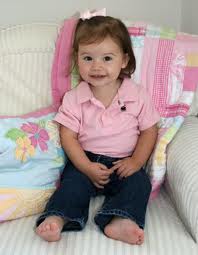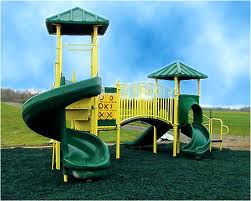
It is very important to recognize what a toodler should be doing at a certain age, like his of her motor skills month by month, so if there is something missing we must take the baby or toodler to an specialist and start an early intervention that can help him to achieve his goals in life. Like I wrote about the first 12 months now I'm going to explain a little about the second 12 months.
The thirteen month:
Gross motor:
-Stoops to pick up an object from floor while holding on with one hand.
-Climbs on a low ledge or step.
-Backs downs stairs and slides down from one step to the next.
-Dislikes all forms of restraint.
-Can stand alone without support for at least 5 seconds.
-Sits down from a free standing position.
-Moves to rhythms.
-Walks in a side-step pattern along furniture.
Fine motor:
-Can grasp 2 cubes in one hand.
-Uses index finger to point.
-Removes small objects from a cup.
-Drops toys and watches them fall.
-Builds tower of 2 cubes.
-Puts 3 or more cubes in cup.
-neat pincer grasp of raisin, using thumb and index finger.
-Pokes, bangs, pulls, turns and twists everything within reach.

The fourteen month;
Gross motor:
-Stands alone.
-Kneels on floor or chair.
-Crawls over low barrier.
-Creeps like a bear, hands and soles of both feet in contact with floor.
-Able to start and stop when walking, with equidistant alternation of feet.
-Stoops and recovers toys from floor.
Fine motor:
-Can pick up and hold 2 small objects in one hand (cubes, spools)
-Can hold 4 cubes in hands at one time.
-Piles 2-3 cubes.
-Voluntarily releases and goes after object.
-Reaches for object by smooth, continuous movement with no spatial error.

The fifteen month:
Gross Motor:
-Climbs upstairs on hands and knees.
-Sits on a small chairs for short periods.
-Walks a few steps sideways and backward.
-Picks up object from a standing position and flings it.
-Can climb on chairs, sofas, tables.
-May climb out of crib, high chair or stroller.
-Has discarted creeping.
-Is ceaselessly active- starting, stopping, starting again, climbing and clambering.
-Uses rapid "running-like"walk.
-Throws ball standing or sitting: extends arm at elbow joint.
Fine Motor:
-Puts a pullet in a bottle and then pours it out.
-Can open a small, hinged box.
-Tries to turn doorknob.
-Wants to hold and carry something in aech hand.

The sixteen month:
Gross motor:
-Trots about well; rarely falls.
-Can walk sideways (does so while pulling a pull toy)
-Hurls ball without falling.
-Tries to take steps on a walking board.
-Climbs and descends stairs with help.
-Attempts to kick a ball, but steps on the ball instead.
-Stands on right foot with help.
-Activaly uses arms, legs, and all parts of the body.
-Tries to walk on tiptoe.
-Squats down smoothly.
-Seats self on a chair.
-Recovers standing position after stooping.
Fine motor:
-Builds tower of 2-3 cubes.
-Turns pages of a book a few at a time.
-Scribbles in imitation.
-Can put round block in formboard.
-puts beads in box.

The seventeeth month:
Gross motor:
-Stoops and recovers.
-Tries to stand on a walking board.
-Likes to lug, tug, and drag things.
-Phisically venturesome.
-Can walk upstairs with one hand held.
-Rejects baby carriage.
-Can stand on right or left foot, holding on.
-Constantly testing own strength -how big a box she or he can pick up or push, etc.
Fine motor:
-Builds tower of 3-4 cubes.
-Begins to show hand preference.
-Has difficulty in coordinating hands and feet.
-Hands not agile at wrists.

The eighteen month:
Gross motor:
-Onset of creeping backward downstairs.
-Picks up toy from floor without falling.
-Moves chairs to cabinet and tries to climb.
-Tries to climb out of crib.
-Walks fast; seldom falls.
-Can climb into adult chair and seat self by turning around.
-Uses whole- arm movement in ball play.
-Walks with one foot on walking board.
-Jumps off floor with both feet.
-Walks into ball; not able yet to make definite kicking motion.
Fine motor:
-Dumps raisin from bottle spontaneously.
-Turns pages of a book, 2 or 3 at once.
-Shows hand preference.
-Builds a tower of 3-4 cubes.
-Scribbles a circular stroke.
-Turns knob of radio or tv.

The nineteen month:
Gross motor:
-Walks up and down stairs, with help.
-Squats from standing position tp pick objects up from floor.
-Walks with one foot on 2"wide walking board, one foot on and one foot off.
-Can pick large ball on ground without stepping on the ball.
-Climbs up onto everything.
-Likes to move to music.
-Runs without falling too frequently.
-Can stand on either foot, holding on.
-Pushes, pulls, throws, and carries objects while walking.
-Walks sideways without crossing feet.
Fine motor:
-Fully developed grasp, prehension, and release.
-Builds tower of 3-4 cubes.
-Holds 2 objects in one hand.
-Holds container with one hand, releases small object into container with one hand, and then dumps out.

The twentieth month:
Groos motor:
-Jumps forward.
-Runs.
-Walks up and down stairs, one hand held.
-Seats self on a small chair by sliding onto it.
-Hands from bar grasping with hands.
-Kicks ball forward.
-Picks up object from floor without falling.
-Pushes and pulls around floor large toys, boxes, etc.
Fine motor:
-Makes tower of 4-5 cubes.
-Can throw a small rubber ball.
-Fits related objects together appropriately by releasing, pressing, turning (ring onto pole, peg into hole, nestling etc.)
_Can put lid on oblong box.
The twenty-first month:
Gross motor:
-Walks up stairs, holding rail with both feet on one step.
-Walks down stairs, one hand held.
-Gets onto and down from adult chair unaided.
-Kicks large ball in forward direction.
-Squats in play.
-Walks with one foot on walking board.
-Stands on either foot, holding on.
-Loves to jump, run, throw, and climb.
-Rhythmic response to music with whole body.
-Throws ball overhand.
-Jumps in place.
Fine motor:
-Makes tower of 5-6 cubes.
-Can fold a piece of paper once imitatively.
-Uses one hand more than the other.

The twenty-second month:
Gross motor:
-Experiments with various kinds of large-muscle activities involving thrust or acceleration.
-Jumps with both feet off the bottom step or staircase.
-Goes quite easily from standing to running.
-Walks up stairs and down stairs, holding on, both feet on each step.
-Pedals small tricycle.
-Pushes and pulls large toys, boxes, etc. , around floor.
-Can quickly alternate between sitting and standing.
-Can kick a large ball without falling.
Fine motor:
-Builds tower of 6 or more cubes.
-Is beginning to learn to put pop-it beads together.
Can string several large beads.

The twenty-third month:
Gross Motor:
-Can seat self at table.
-Can throw a ball into a basket.
-Walks up and down stairs alone, both feet on one step at a time, holding onto railing.
-Bands at waist to pick up something off floor without falling.
-Tries to stand on tiptoe imitatively.
-Runs fairly well.
-Throws object overhand instead of tossing.
-Usually runs when moving from one place to another; runs rather than walks.
-Squats on floor.
-Jumps in place.
-Pedals small tricycle.
-Climbs out of crib.
-Stands on walking board with both feet.
Fine motor:
-Can make a train of 3 or more cubes.
-Strings beads together.
-A little more adept at joining pop-it beads together.
-Builds tower of 6 or more cubes.
The twenty-four month:
Gross Motor:
-Visually monitors walking, watching placement of feet in order to be able to deal with obstacles in path by avoiding them.
-Runs, but generally lacks ability to start efficiently or stop quickly.
-Jumps crudely with 2 foot takeoff.
-Walking rhythm stabilizes and becomes even.
-Goes up and down stairs alone without alternating feet.
-Can walk appoximately on line.
-Likes to walk on low walls with one hand held.
-Can walk a few steps on tiptoe.
-Can be trusted alone on stairs.
-Can walk backwards 10 feet.
-Can quickly alternate between sitting and standing.
-Tries to balance self on either foot, not yet succesfully.
-Is sturdy on feet; less likely to fall.
-Still geared to gross-motor activity.
Fine motor:
-Turns pages of a book, one at a time.
-Manipulates more freely with one hand; alternates from one hand to the other.
-Has fully developed right or left handedness.
-Increased smoothness of coordination in fine motor movements.
























